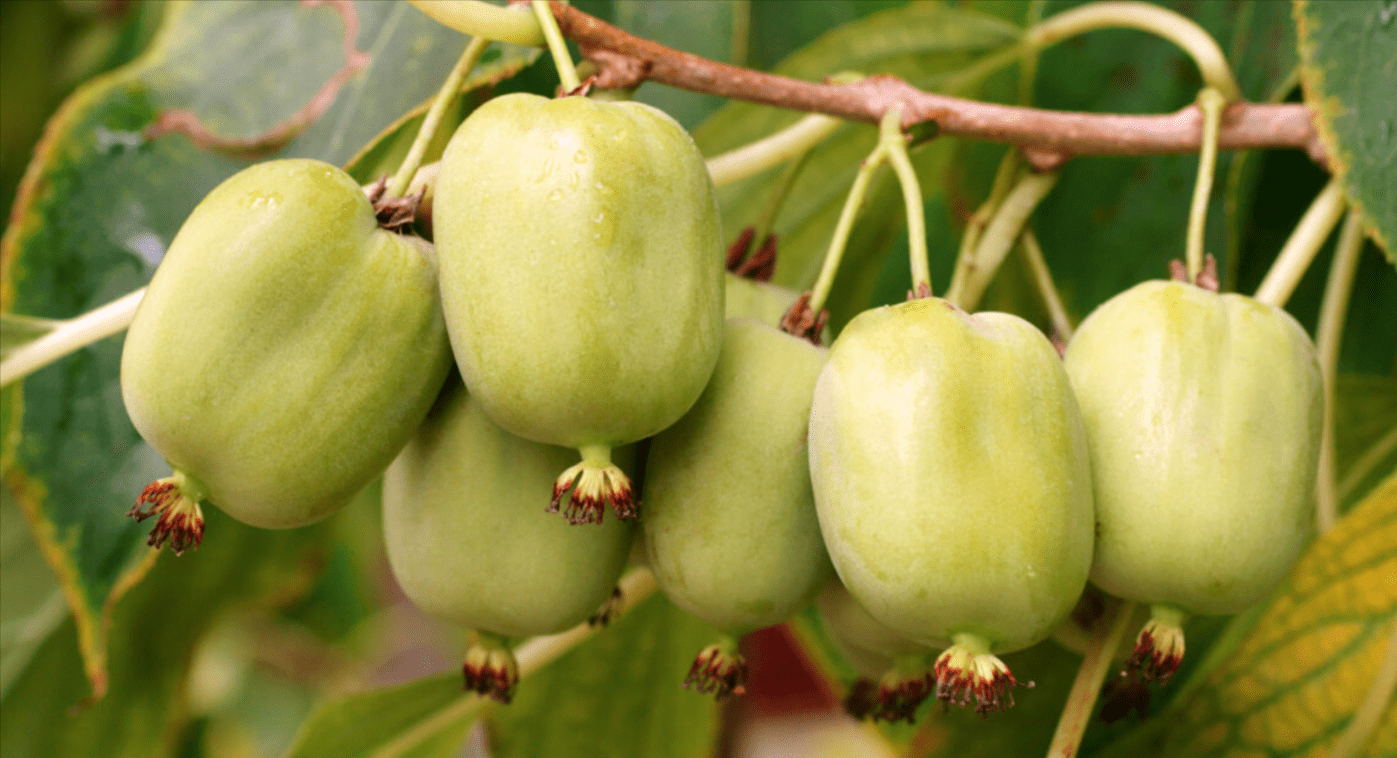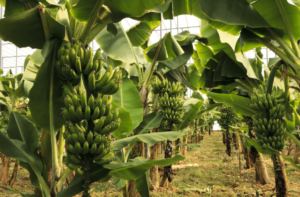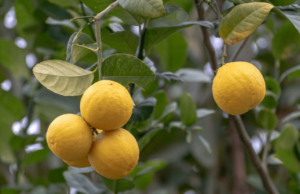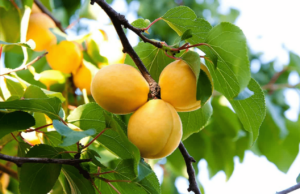How to Cultivate and Nurture Prolific Hardy Kiwi Vines
With minimal effort and care, Prolific hardy kiwi vines can yield hundreds of pounds of small, smooth-skinned kiwis annually. These vines flourish in colder climates where fuzzy-skinned kiwis struggle to survive, making them a fantastic fruiting option for gardens. Continue reading with PNW gardener Jerad Bryant, and you’ll be well on your way to a bountiful supply of fresh kiwi fruit!
One of the joys of fruit is the nostalgia it brings. I fondly remember my mother slicing kiwi fruit for my lunch as a child. Every time I taste one, the tropical flavor transports me back to those warm, comforting memories of youth.
While kiwis are commonly found in grocery stores, growing them at home offers a cost-free alternative. Cultivating a ‘Prolific’ hardy kiwi vine in your backyard means you’ll enjoy a continuous supply of fresh fruit without ever needing to purchase them again.
However, growing this vine requires some planning. You’ll need to regularly prune, manage, and control its growth. Hardy kiwis are vigorous growers and require similar maintenance to that of grapevines to keep them in check.
About Prolific Hardy Kiwi
Hardy kiwi vines produce fruit with a flavor reminiscent of the kiwis you buy at the store, though they are smaller and lack the fuzzy skin. These kiwis are excellent in fruit salads, smoothies, and preserves, and they are particularly delightful for fresh eating due to their edible skins.
All kiwi plants belong to the genus Actinidia, with the hardy kiwi scientifically known as Actinidia arguta. The ‘Prolific’ variety is self-fertile and more compact compared to other kiwi types. This makes it ideal for home gardens, as it can fit into smaller spaces and easily climb trellises without needing a separate male plant for pollination.
Kiwi plants are generally dioecious, meaning each plant is either male or female and only produces flowers of its respective sex.
The ‘Prolific’ variety is unique because it produces both male and female flowers, allowing it to pollinate other female kiwi plants. By choosing ‘Prolific,’ you eliminate the need for a separate male pollinator, thereby freeing up space in your garden for additional fruits and vegetables.
Origin Area
The ‘Prolific’ Kiwi plant boasts robust, twining vines, heart-shaped green foliage, and clusters of small, fragrant white flowers. These kiwis flourish in temperate climates and use tendrils to climb.
All kiwi species trace their origins to eastern Asia, where they thrive in temperate and subtropical conditions. In their native habitats, winters are typically cool, moist, and humid, while summers are warm, sunny, and humid.
In their natural forests, hardy kiwis climb trees with their tendrils, using other plants for support to reach the canopy. These wild vines can grow from 40 to 100 feet tall, twisting around other vegetation and developing a strong, woody base that enables them to climb even higher each year.
Today, hardy kiwi vines are cultivated worldwide in temperate and subtropical regions. They need a period of winter chill and a lengthy growing season to thrive, and they can be found throughout North America, from New York to Oregon. In some areas on the East Coast, hardy kiwi species have escaped cultivation and begun to invade local forests. To prevent contributing to their spread, be sure to harvest all the fruit and avoid planting these vines near natural areas or forests.
Characteristics
The ‘Prolific’ Kiwi plant is characterized by its vigorous, intertwining vines, large, deep green leaves, and an abundance of small, smooth-skinned kiwi fruits. These hardy kiwis are notable for their vigorous climbing ability and their preference for sturdy support structures.
Like grapevines, ‘Prolific’ hardy kiwi vines develop woody growth as they mature, and they benefit greatly from support provided by other trees or shrubs. While they can manage on their own, their growth and fruit yield are significantly enhanced when they have a stable support system.
The vines produce round, light-green leaves with pale undersides and creamy white flowers that gradually turn yellowish-brown as the season progresses. The fruits of ‘Prolific’ kiwis are greenish-purple and have a flavor reminiscent of a blend of bananas, melons, and strawberries.
When cultivating ‘Prolific’ kiwi vines, note that they are less aggressive in their spread compared to other varieties. They typically climb to a height of six or seven feet, making them well-suited for growing on arbors, trellises, or archways to achieve optimal results.
Propagation
To maintain the unique traits of the ‘Prolific’ hardy kiwi, propagate it using cuttings rather than seeds. Although growing hardy kiwi from seeds can be an enjoyable experiment, the resulting plants will not have the same characteristics as the ‘Prolific’ variety. For consistent results, opt for cuttings to reproduce this specific type.
Seeds
Hardy kiwi seeds are notoriously hard to find as they often do not produce true-to-type offspring, meaning the new plants may have different traits from the parent plant. You can obtain seeds from a mature vine owned by a neighbor, a local farm, or a specialized nursery. Seed exchange programs can also be a great resource for acquiring these rare seeds.
Once you’ve secured seeds, the next step is germination. Sow two seeds per five-inch pot filled with potting soil, planting them no deeper than half an inch. Water the soil thoroughly and keep it consistently moist, but avoid overwatering. Place the pots under a light source, such as grow lights or sunlight through a window.
In a few weeks, your kiwi seeds should begin to sprout. Keep the seedlings indoors until all risk of frost has passed, then transplant them into the garden once the spring weather is reliably warm.
Cuttings
Replicating ‘Prolific’ hardy kiwis through cuttings can be a bit challenging but ensures that the new plants will have the same genetic traits as the parent plant. This method guarantees that the characteristics of the ‘Prolific’ kiwi, including its fruit quality, are preserved.
For best results, take cuttings in the spring when new growth is active. Softwood cuttings, taken from the fresh growth of the current year, root more effectively than hardwood cuttings. Choose pieces of wood less than a year old, removing the lower leaves while leaving one or two leaves at the top.
Insert the cuttings into a sterile potting mix and keep them in a spot with filtered light. Water them thoroughly and maintain soil moisture. Cover the pots with a humidity dome to enhance rooting. Once the cuttings develop roots, relocate them to a sunny area and continue to water them well. After a few months, the rooted cuttings will be ready for transplanting into the garden.
Planting
‘Prolific’ hardy kiwis thrive when planted during cooler seasons such as fall or early spring. In regions prone to winter frost, wait until after the last frost date in spring to plant. However, in areas with milder winters, you can plant hardy kiwis at any time the weather is cool.
Preparation
Set the stage for your hardy kiwi vines by choosing a spot with ample sunlight or partial shade. Before planting, install a robust support structure for the vines to climb. As hardy kiwis mature, they develop thicker growth and require a sturdy support system. For long-lasting results, consider using materials such as thick wooden posts or durable metal structures, similar to those used by commercial growers.
These vines can also transform unconventional garden features into thriving green spaces, such as old tree stumps or large garden sculptures. If a traditional trellis isn’t feasible, think creatively about other structures that can serve as climbing aids.
When preparing the planting hole, dig it to be as deep and twice as wide as the root ball for container plants. For bare-root plants, dig a hole that accommodates the length and spread of the roots. At the bottom of the hole, create a moat by digging a deep circle around the edges, leaving the center soil compact.
Transplanting
Once your planting hole is ready, it’s time to transplant your hardy kiwi vines. For container-grown vines, remove them from their pots, loosen the root ball, and trim any roots that are circling. Position the root ball in the center of the hole.
Fill the hole halfway with soil and water thoroughly to help the soil settle. Add more soil to fill the hole level with the surrounding ground, then water again. If the soil settles, add more to ensure the level remains even.
For bare-root vines, soak the roots for a few hours before planting. Place the vine in the center of the hole, spreading the roots into the moat. Since bare-root plants lack a root ball, they need careful handling. As you fill the hole with soil, ensure the vine’s trunk remains above ground, with the root flare level with the soil surface. Adjust the position if necessary and continue filling until the hole is full. Water well to help the soil settle around the roots.
After planting, apply a layer of compost or organic mulch around the base of the vine. This helps retain moisture, keeps the soil cool during hot periods, and insulates the roots in winter. A generous layer of compost will support your ‘Prolific’ kiwi vine through seasonal changes and encourage robust growth.
How to Grow
To help your hardy kiwi thrive, ensure it has the right support, adequate water, and sufficient nutrients. Once established, this resilient plant produces abundantly with minimal issues related to pests or diseases. The primary challenge in North America is frost, which can impact fruit quality and yield. However, following these growing tips will help your hardy kiwi flourish even in the face of frost and drought.
Light
‘Prolific’ kiwi vines thrive in full sunlight, benefiting from six to eight hours of direct sun daily. In regions with scorching summers, providing some afternoon shade can protect the vines from excessive heat (temperatures above 90°F or 32°C).
In their natural habitat, kiwi vines grow under forest canopies, climbing up trees to reach the light. By planting them in full sun, you mimic this environment, encouraging vigorous growth and robust development over time.
Water
Ensure ‘Prolific’ kiwi vines receive consistent moisture throughout the growing season. While established vines are drought-tolerant, they prefer moist soil but are sensitive to waterlogging. To prevent excess moisture, avoid watering if the soil is already damp.
During the flowering and fruiting phases, the vines might need watering two to five times a week. Applying mulch or compost around the base of the vine helps retain soil moisture, reducing the frequency of watering.
In periods of intense heat, consider adding a shade cover to protect the vine from stress, which can lead to premature fruit drop. With adequate watering and shade during hot weather, your ‘Prolific’ kiwi will thrive throughout the summer.
Soil
Ensure your ‘Prolific’ hardy kiwi vines thrive by providing well-drained, fertile soil. They perform best in a loamy mix enriched with materials like vermiculite or wood bark, which enhance soil aeration and moisture retention, creating an optimal environment for root growth.
While hardy kiwi vines are quite adaptable and can tolerate various soil types, proper drainage is crucial. If your soil is heavy and poorly draining, amend it with compost a few weeks prior to planting. This will improve soil structure, support beneficial organisms like worms, bacteria, and fungi, and make planting easier.
Fertilizing
To avoid salt burn, which can be a risk with fertilizers, especially in alkaline soils, apply fertilizers sparingly and ensure they are well watered in. Steer clear of non-organic options that might be too harsh on your kiwi vines.
‘Prolific’ vines benefit from regular feeding each season. Use a balanced organic fertilizer according to the package instructions, which will typically indicate the ratios of nitrogen, phosphorus, and potassium. Balanced fertilizers also contain beneficial micronutrients.
Fertilize the soil at planting and again after the first growing season in late summer. Apply a dose in spring, then reduce to half the recommended amount after the second growing season. Thereafter, continue with a full dose each spring and a half dose following fruiting.
Temperature and Humidity
‘Prolific’ kiwi vines thrive in moderate temperatures and high humidity. They are suitable for USDA zones four through eight. Like other temperate fruits, they require a minimum of 300 chill hours below 45°F (7°C) during winter to fruit successfully.
Protect flowering plants from frost by covering them with frost cloth if temperatures drop below freezing. This layer will shield your vines and help preserve their blooms.
In spring and summer, ensure your hardy kiwis have a long growing season with warm, sunny conditions and high humidity. They are also sensitive to strong winds, which can dry out their leaves. Position your ‘Prolific’ kiwis in a location sheltered from wind to maintain their health and vitality.
Vine Care Essentials
Hardy kiwis, much like hops, can become quite vigorous in their growth and might spread into areas you prefer to keep clear. Regular pruning is key to controlling this rampant growth and encouraging a substantial fruit harvest.
During the dormant season, trim the vine back to the main trunk. Since hardy kiwis bear fruit on wood that is one year old, retain a few branches extending from the main trunk, and prune them to leave several buds.
Summer pruning is also useful for managing excessive growth. Trim any crossing branches and overextended shoots to keep the plant in check and manageable.
Kiwi Harvesting
Harvest ‘Prolific’ kiwis once they begin to soften. These fruits mature over an extended growing period, typically becoming ready for harvest by late summer or fall. To determine ripeness, sample a few kiwis and check their sweetness. If they taste delightful, they’re good to go!
Uses
Incorporate hardy kiwis into fresh fruit dishes such as salads and fruit bowls. While eating them straight off the vine is ideal, it might not be feasible with a large harvest. For abundant yields, freeze the excess for use in smoothies or turn them into jam using your favorite recipe.
Common Issues
‘Prolific’ hardy kiwi vines can face some challenges when grown outside their native environment, but don’t worry—most problems are manageable with proper care.
Trunk Damage
When hardy kiwis start growing before the last frost, they may suffer from freezing temperatures. Protect young vines by covering them with frost cloth before a hard freeze. If the trunk is damaged, wait until spring to assess the extent of the damage. The plant might recover on its own; however, remove any dead parts of the trunk once you see new growth in the spring.
Lack of Flowers or Fruit
A common cause for a shortage of fruit is frost, which can lead to flower drop. Newly planted vines might also take a few years to start fruiting as they need time to become established. Be patient and ensure your vines are protected from frost to improve fruit production.
Excessive Growth
Kiwi vines can spread aggressively and invade unwanted areas. Regularly trim back overreaching branches to keep the growth controlled and tidy. As the branches mature and become woody, make sure to cut back any excessive shoots.
Pests
Root-knot nematodes and Japanese beetles can be problematic, especially in hot weather. To mitigate damage, keep the soil cool with compost or mulch and ensure consistent watering during heat waves. Additionally, cats might be attracted to your vines due to catnip-like compounds, so use mulch to deter scratching and cover vines to keep them safe from curious felines.
Deer and Gophers
Deer and gophers can also pose threats. Install hardware cloth around the root area to protect against gophers and use critter cages or frost cloth to deter deer. Planting deer-resistant species nearby can also help keep these animals at bay.
Diseases
Root and Crown Rot
‘Prolific’ kiwi vines growing in heavy, clay soil are susceptible to root and crown rot. This infection occurs when the roots are deprived of oxygen, leading to yellowing and eventual decline of the plant under normal stress conditions. To prevent this issue, amend the soil with compost before planting and continue to add compost to established plants twice a year—once before fruiting and once after.
Frequently Asked Questions
What is the flavor profile of hardy kiwis?
Hardy kiwis are small, fuzzless fruits with edible skins, resembling grapes in size. They offer a flavor that combines elements of melons, bananas, and strawberries.
Where can ‘Prolific’ hardy kiwi vines be grown in the United States?
‘Prolific’ hardy kiwi vines thrive in USDA zones four through eight. While they may occasionally survive outside these zones, they might struggle to produce fruit effectively.
Are hardy kiwi vines drought resistant?
Yes, they are drought tolerant once established and prefer well-drained soil. Newly planted vines should be kept well-watered to ensure they thrive through their first year.
Final Thoughts
‘Prolific’ kiwis are delightful fruits that are worth growing at home. These hardy vines, with their vibrant green leaves and abundant sweet fruit, make a fantastic addition to any garden. By planting a ‘Prolific’ kiwi vine, you can enjoy fresh kiwifruit for many years to come!



